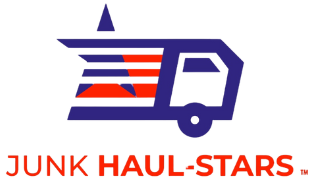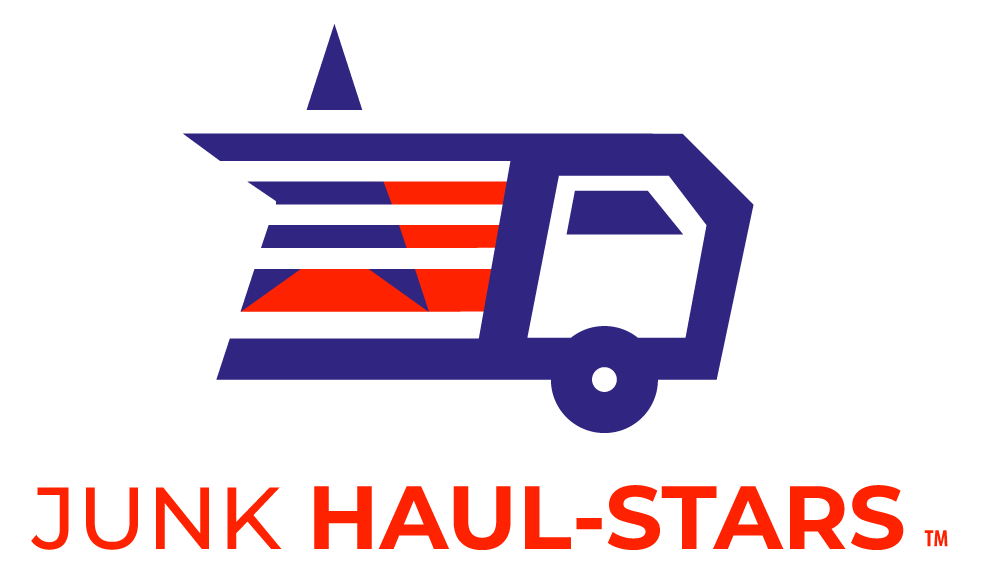Estate Cleanouts Require White Glove Service
Estate Cleanouts Require White Glove Service April 10, 2025
Why Estate Cleanouts Are Best Left to the Pros
Not all junk removal jobs are the same. Some are quick and easy — like getting rid of an old couch or clearing out a few boxes from the garage. But others? They’re a whole different story. Estate cleanouts are one of those jobs that need more than just a truck and a strong back.
At Junk Haul-Stars, we’re all about tackling the bigger, more complicated jobs — like estate cleanouts. Whether you’re handling a loved one's estate, getting a house ready to sell, or just need a full-property cleanout, we know it can feel overwhelming. We're here to make it as easy and stress-free as possible.
Estate Cleanouts Are a Different Beast
This isn't a job for a buddy with a pickup truck. You need a team that knows what they're doing. Cleaning out an entire home isn’t just a bigger version of a garage cleanout. It’s usually an emotional process too. Estate cleanouts often happen during tough life moments — after someone passes away, downsizing, or major life changes.
Here’s Why You Want a Pro
We get it: We're respectful and professional.
We’ve got the muscle and the trucks: Big jobs are no problem.
We know what to look for: Not everything is junk. Some things can be donated or recycled.
We work with whoever needs us: Family, real estate agents, lawyers — you name it!
Here’s What Working With Us Looks Like
Free Estimates: No pressure. We check out the job, give you a fair quote, and let you decide.
Thoughtful Sorting: We don’t just toss everything. We help separate out what’s worth saving or donating.
Quick Turnarounds: We’re fast, even if you’re on a deadline.
Fully Licensed and Insured: So you’re covered, no worries.
Real People Helping Real People: A local team that cares and will prepare you for the cleanout event.
Big jobs like estate cleanouts can feel huge, but you don’t have to do it alone. At Junk Haul-Stars, we bring the team, the tools, and the heart to get it done right.
If you’re staring down a big cleanout, let’s chat. We’re here to help.
Want to stay in the loop? Follow us on LinkedIn for more tips, stories, and cleanout inspiration!
https://www.linkedin.com/company/junk-haul-stars/
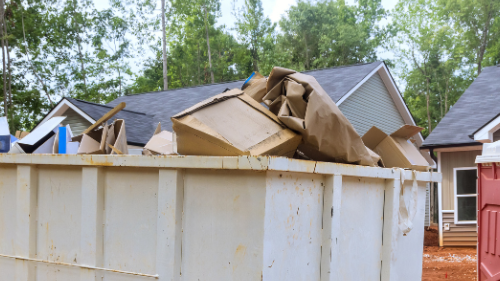
Each year, millions of mattresses are discarded, posing significant challenges for waste management and environmental sustainability. Traditional disposal methods, primarily landfilling, are proving inadequate due to the bulky nature of mattresses and their slow decomposition rate. However, recent initiatives and legislative measures are paving the way for more sustainable mattress disposal through recycling. The Environmental Impact of Discarded Mattresses Mattresses are notoriously difficult to manage in landfills. Their size and composition mean they occupy substantial space and do not compact well, leading to inefficient use of landfill capacity. Additionally, as mattresses break down, they can release harmful chemicals into the environment, contributing to pollution and greenhouse gas emissions. Recognizing these issues, many communities and organizations are seeking alternative disposal methods to mitigate these environmental impacts. Legislative Measures Promoting Mattress Recycling Several states have enacted laws to facilitate mattress recycling and reduce landfill dependency: California, Connecticut, and Rhode Island : These states have established statewide mattress recycling programs funded by consumer fees collected at the point of sale. These initiatives have successfully diverted millions of mattresses from landfills and promoted the development of recycling facilities. Oregon : Beginning January 1, 2025, Oregon implemented a $22.50 fee on new mattress purchases to fund its mattress recycling program, becoming the fourth state to adopt such a policy. These programs not only facilitate the recycling process but also raise consumer awareness about the environmental impact of mattress disposal. Local Initiatives Making a Difference Municipalities are also taking proactive steps to address mattress waste: Baltimore City, Maryland : In September 2024, the Department of Public Works launched a mattress and box spring recycling program at the Quarantine Road Landfill Residential Drop-Off Center. This initiative aims to divert bulky waste from landfills and repurpose over 90% of mattress materials. San Diego, California : The city's Mattress Recycling Program collected 16,921 mattresses in 2024, significantly reducing landfill waste and illegal dumping. This effort aligns with San Diego's Zero Waste and Climate Action Plan goals. These local programs demonstrate the feasibility and benefits of mattress recycling at the community level. The Recycling Process and Its Benefits Recycling a mattress involves dismantling it into its core components—metal, foam, fabric, and wood—which can then be repurposed: Metal Springs : Recycled as scrap metal for use in new products. Foam Padding : Processed into carpet underlayment or insulation. Fabric and Fibers : Repurposed for industrial filters or furniture upholstery. Wood Frames : Shredded for mulch or used as biomass fuel. By diverting mattresses from landfills, recycling conserves resources, reduces pollution, and supports the circular economy. Challenges and Future Directions Despite the benefits, challenges remain. The labor-intensive process of dismantling mattresses and the costs associated with transportation can be barriers to widespread recycling. However, investments in recycling infrastructure and technology are addressing these issues. For instance, Ingka Group, the largest IKEA retailer, announced a €1 billion investment in recycling companies to enhance waste management for products like mattresses. Conclusion The movement toward mattress recycling is gaining momentum through a combination of legislative action, local initiatives, and industry investment. These efforts are crucial in reducing landfill waste, conserving resources, and promoting environmental sustainability. As more communities and organizations recognize the importance of responsible mattress disposal, recycling programs are set to play a pivotal role in waste management strategies.
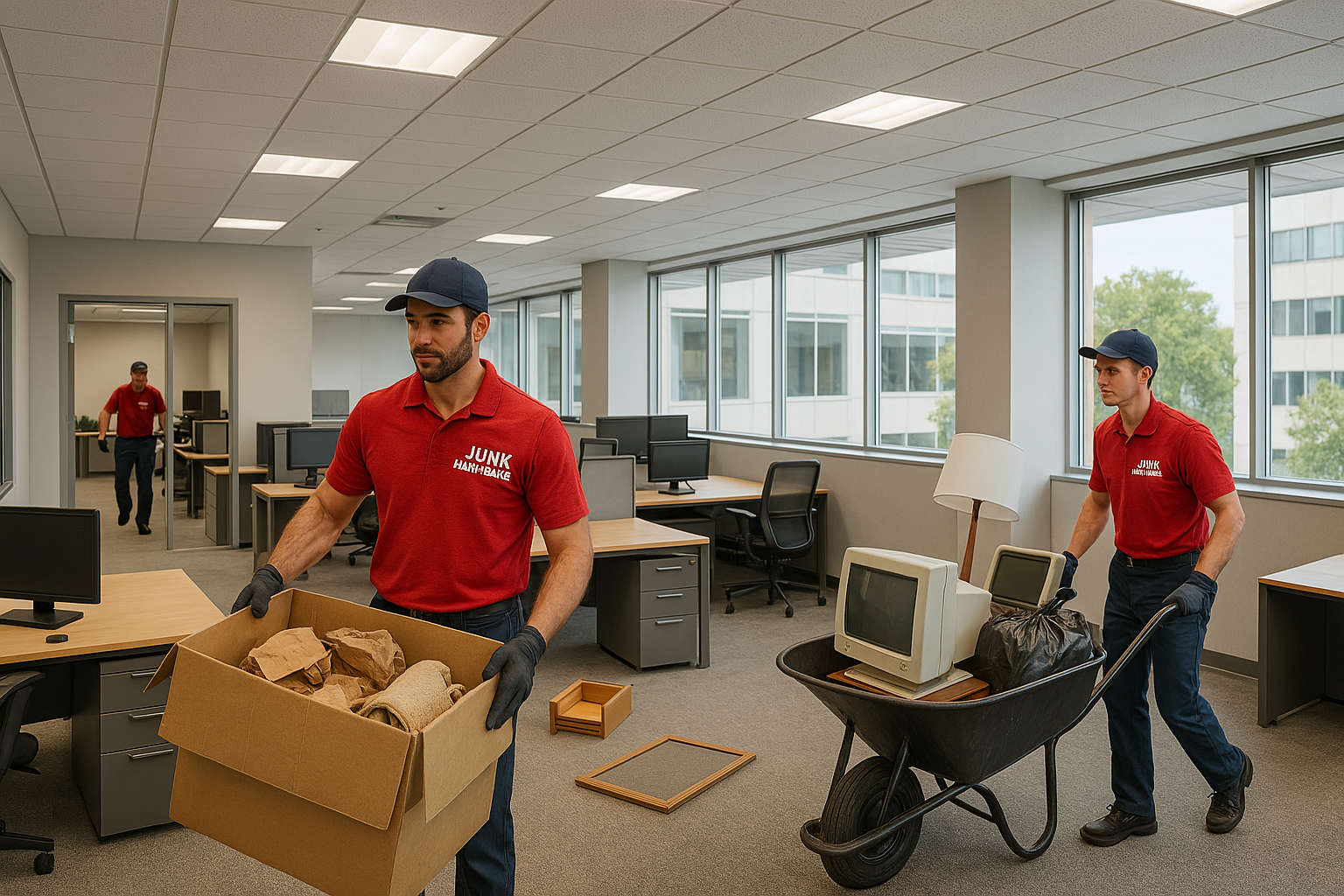
In today's consumer-driven society, the accumulation of unwanted items is a common challenge. While disposing of these items might seem straightforward, many are still in usable condition and can serve a greater purpose. This is where the collaboration between junk haulers and donation centers becomes invaluable. By working together, they ensure that items are responsibly redirected to benefit those in need, promoting environmental sustainability and community welfare. How the Partnership Works The collaboration between junk haulers and donation centers typically follows a structured process: Item Assessment: Upon collection, haulers assess items to determine their condition and suitability for donation. Sorting and Allocation: Usable items are sorted and earmarked for specific charities based on the organizations' needs and acceptance criteria. Delivery to Donation Centers: Haulers transport the selected items to their partnered donation centers, ensuring they reach the intended beneficiaries. Documentation: Many haulers provide clients with donation receipts, which can be used for tax deduction purposes. Benefits to the Community and Environment This symbiotic relationship offers multiple advantages: Environmental Impact: By diverting items from landfills, this collaboration reduces waste and promotes recycling, contributing to a healthier planet. Community Support: Donation centers receive a steady influx of goods, which can be sold to fund charitable initiatives or directly provided to those in need. Convenience for Donors: Individuals and businesses can declutter responsibly without the logistical challenges of transporting items to multiple donation centers. Challenges and Considerations While the partnership is beneficial, certain challenges exist: Item Acceptance Policies: Not all items are suitable for donation. Haulers must be aware of each charity's acceptance criteria to avoid unnecessary transportation and potential disposal. Logistics and Costs: Coordinating pickups, sorting, and deliveries require resources. Some haulers may charge fees for donation pickups, especially if free services are unavailable in certain areas. Condition of Items: Only items in good condition are typically accepted for donation. Haulers and donors must ensure that items are clean and functional. Conclusion The collaboration between junk haulers and donation centers exemplifies how businesses can operate sustainably while supporting their communities. By facilitating the redirection of usable items from landfills to those in need, they play a pivotal role in promoting environmental responsibility and social welfare. As consumers, choosing such services ensures that our unwanted items continue to serve a purpose, embodying the adage: one person's trash is another's treasure.
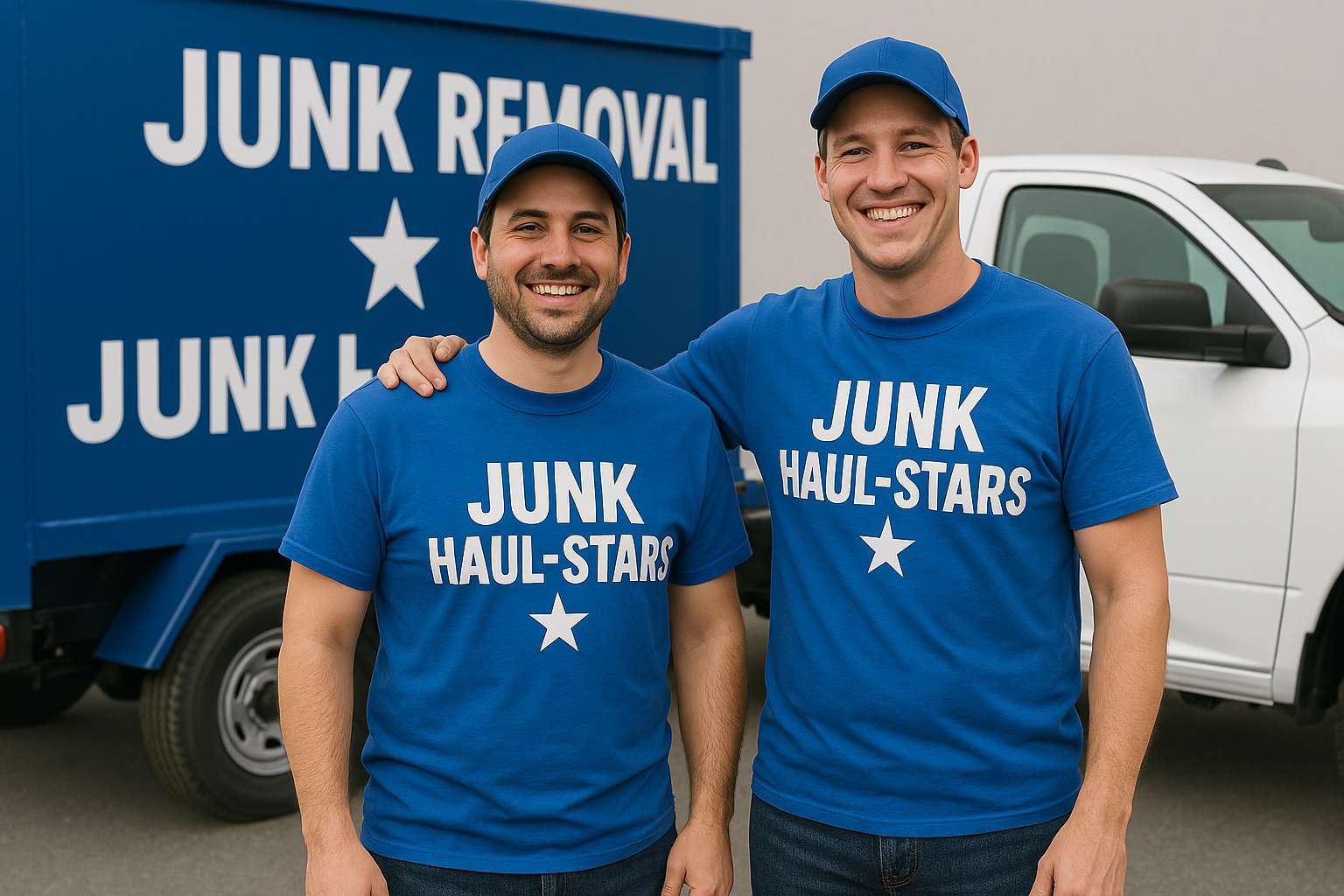
In the world of junk removal, every day is an adventure. While most hauls involve the usual suspects—old furniture, broken appliances, and stacks of forgotten magazines—sometimes, junk haulers stumble upon items that are anything but ordinary. Let's take a lighthearted look at some of the most bizarre discoveries that have left even seasoned professionals scratching their heads. A Goat Among the Garbage Yes, you read that correctly. One junk removal team was in for a surprise when they found a live goat amidst the clutter. It's unclear how the goat got there, but it certainly added a new meaning to the term "kid in a candy store." https://www.rd.com/list/craziest-things-garbage-collectors-found-trash/ The Doll That Nightmares Are Made Of Dolls are a common find, but some are straight out of a horror movie. One team uncovered an axe-wielding doll bride, reminiscent of a certain infamous cinematic doll. Needless to say, they handled that pickup with extra caution. A Boatload of Questions Finding a boat in a yard isn't too unusual—unless the yard is nowhere near water. One team hauled away a sizable boat that had become a permanent lawn ornament. Maybe the owner was waiting for a flood? https://remodelingmagazine.co/6-weird-things-found-in-the-trash-by-waste-management-service-people/ Musical Chairs... and Pianos Musical instruments often find their way into the junk pile, but one property took it to the next level with fourteen pianos. Whether the owner was an avid pianist or just couldn't resist a good deal, it's a mystery for the ages. Conclusion The junk removal industry is full of surprises, proving that one person's trash can truly be another's treasure—or at least a source of bewilderment. These stories highlight the unpredictable and often humorous side of decluttering, reminding us that you never know what you'll find when you start digging through the junk.

Each year, millions of mattresses are discarded, posing significant challenges for waste management and environmental sustainability. Traditional disposal methods, primarily landfilling, are proving inadequate due to the bulky nature of mattresses and their slow decomposition rate. However, recent initiatives and legislative measures are paving the way for more sustainable mattress disposal through recycling. The Environmental Impact of Discarded Mattresses Mattresses are notoriously difficult to manage in landfills. Their size and composition mean they occupy substantial space and do not compact well, leading to inefficient use of landfill capacity. Additionally, as mattresses break down, they can release harmful chemicals into the environment, contributing to pollution and greenhouse gas emissions. Recognizing these issues, many communities and organizations are seeking alternative disposal methods to mitigate these environmental impacts. Legislative Measures Promoting Mattress Recycling Several states have enacted laws to facilitate mattress recycling and reduce landfill dependency: California, Connecticut, and Rhode Island : These states have established statewide mattress recycling programs funded by consumer fees collected at the point of sale. These initiatives have successfully diverted millions of mattresses from landfills and promoted the development of recycling facilities. Oregon : Beginning January 1, 2025, Oregon implemented a $22.50 fee on new mattress purchases to fund its mattress recycling program, becoming the fourth state to adopt such a policy. These programs not only facilitate the recycling process but also raise consumer awareness about the environmental impact of mattress disposal. Local Initiatives Making a Difference Municipalities are also taking proactive steps to address mattress waste: Baltimore City, Maryland : In September 2024, the Department of Public Works launched a mattress and box spring recycling program at the Quarantine Road Landfill Residential Drop-Off Center. This initiative aims to divert bulky waste from landfills and repurpose over 90% of mattress materials. San Diego, California : The city's Mattress Recycling Program collected 16,921 mattresses in 2024, significantly reducing landfill waste and illegal dumping. This effort aligns with San Diego's Zero Waste and Climate Action Plan goals. These local programs demonstrate the feasibility and benefits of mattress recycling at the community level. The Recycling Process and Its Benefits Recycling a mattress involves dismantling it into its core components—metal, foam, fabric, and wood—which can then be repurposed: Metal Springs : Recycled as scrap metal for use in new products. Foam Padding : Processed into carpet underlayment or insulation. Fabric and Fibers : Repurposed for industrial filters or furniture upholstery. Wood Frames : Shredded for mulch or used as biomass fuel. By diverting mattresses from landfills, recycling conserves resources, reduces pollution, and supports the circular economy. Challenges and Future Directions Despite the benefits, challenges remain. The labor-intensive process of dismantling mattresses and the costs associated with transportation can be barriers to widespread recycling. However, investments in recycling infrastructure and technology are addressing these issues. For instance, Ingka Group, the largest IKEA retailer, announced a €1 billion investment in recycling companies to enhance waste management for products like mattresses. Conclusion The movement toward mattress recycling is gaining momentum through a combination of legislative action, local initiatives, and industry investment. These efforts are crucial in reducing landfill waste, conserving resources, and promoting environmental sustainability. As more communities and organizations recognize the importance of responsible mattress disposal, recycling programs are set to play a pivotal role in waste management strategies.

In today's consumer-driven society, the accumulation of unwanted items is a common challenge. While disposing of these items might seem straightforward, many are still in usable condition and can serve a greater purpose. This is where the collaboration between junk haulers and donation centers becomes invaluable. By working together, they ensure that items are responsibly redirected to benefit those in need, promoting environmental sustainability and community welfare. How the Partnership Works The collaboration between junk haulers and donation centers typically follows a structured process: Item Assessment: Upon collection, haulers assess items to determine their condition and suitability for donation. Sorting and Allocation: Usable items are sorted and earmarked for specific charities based on the organizations' needs and acceptance criteria. Delivery to Donation Centers: Haulers transport the selected items to their partnered donation centers, ensuring they reach the intended beneficiaries. Documentation: Many haulers provide clients with donation receipts, which can be used for tax deduction purposes. Benefits to the Community and Environment This symbiotic relationship offers multiple advantages: Environmental Impact: By diverting items from landfills, this collaboration reduces waste and promotes recycling, contributing to a healthier planet. Community Support: Donation centers receive a steady influx of goods, which can be sold to fund charitable initiatives or directly provided to those in need. Convenience for Donors: Individuals and businesses can declutter responsibly without the logistical challenges of transporting items to multiple donation centers. Challenges and Considerations While the partnership is beneficial, certain challenges exist: Item Acceptance Policies: Not all items are suitable for donation. Haulers must be aware of each charity's acceptance criteria to avoid unnecessary transportation and potential disposal. Logistics and Costs: Coordinating pickups, sorting, and deliveries require resources. Some haulers may charge fees for donation pickups, especially if free services are unavailable in certain areas. Condition of Items: Only items in good condition are typically accepted for donation. Haulers and donors must ensure that items are clean and functional. Conclusion The collaboration between junk haulers and donation centers exemplifies how businesses can operate sustainably while supporting their communities. By facilitating the redirection of usable items from landfills to those in need, they play a pivotal role in promoting environmental responsibility and social welfare. As consumers, choosing such services ensures that our unwanted items continue to serve a purpose, embodying the adage: one person's trash is another's treasure.

In the world of junk removal, every day is an adventure. While most hauls involve the usual suspects—old furniture, broken appliances, and stacks of forgotten magazines—sometimes, junk haulers stumble upon items that are anything but ordinary. Let's take a lighthearted look at some of the most bizarre discoveries that have left even seasoned professionals scratching their heads. A Goat Among the Garbage Yes, you read that correctly. One junk removal team was in for a surprise when they found a live goat amidst the clutter. It's unclear how the goat got there, but it certainly added a new meaning to the term "kid in a candy store." https://www.rd.com/list/craziest-things-garbage-collectors-found-trash/ The Doll That Nightmares Are Made Of Dolls are a common find, but some are straight out of a horror movie. One team uncovered an axe-wielding doll bride, reminiscent of a certain infamous cinematic doll. Needless to say, they handled that pickup with extra caution. A Boatload of Questions Finding a boat in a yard isn't too unusual—unless the yard is nowhere near water. One team hauled away a sizable boat that had become a permanent lawn ornament. Maybe the owner was waiting for a flood? https://remodelingmagazine.co/6-weird-things-found-in-the-trash-by-waste-management-service-people/ Musical Chairs... and Pianos Musical instruments often find their way into the junk pile, but one property took it to the next level with fourteen pianos. Whether the owner was an avid pianist or just couldn't resist a good deal, it's a mystery for the ages. Conclusion The junk removal industry is full of surprises, proving that one person's trash can truly be another's treasure—or at least a source of bewilderment. These stories highlight the unpredictable and often humorous side of decluttering, reminding us that you never know what you'll find when you start digging through the junk.


